The Differences Between Microscopes and Telescopes

Microscopes and telescopes function similarly by letting people view objects not visible to the naked eye. Aside from this, both instruments utilize convex and concave glasses to magnify the object of interest. Although both devices use similar scientific concepts, they feature several differences .
Basic Differences
Although both instruments magnify objects so that the human eye can see them, a microscope looks at things very near, while telescopes view things very far away. Microscopes are commonly found in laboratories, often used by biologists and chemists, while telescopes are found in observatories, most often used by astronomers.Focal Length
Although both instruments use lenses to magnify objects, the construction differs from one to the other. One of those differences is focal length. Amazing-space.stsci.edu defines focal length as “the distance between the center of a convex lens or a concave mirror and the focal point of the lens or mirror — the point where parallel rays of light meet, or converge.” A telescope has objective lenses producing long focal lengths, while a microscope has objective lenses producing short focal lengths.Since telescopes view large objects -- faraway objects, planets or other astronomical bodies -- its objective lens produces a smaller version of the actual image. On the other hand, microscopes view very small objects, and its objective lens produces a larger version of the actual image. The focal lengths of both instruments make this possible.
Lens Diameter
Another major difference between telescopes and microscopes is the diameter of the lenses. A lens with a larger diameter can absorb lots of light, illuminating the object being viewed. Since objects viewed in a telescope are far away, there is no way for the user to illuminate the object, thus the telescope requires a larger lens diameter. Most microscopes come standard with an artificial light source, illuminating objects. This eliminates the need for a larger diameter lens.Standard Modifications
In telescopes, you can change the eyepiece to modify image magnification, as well as style; the objective lens remains fixed. Alternatively, microscopes have fixed eyepieces and a set of three to four interchangeable objective lenses that you can set differently, changing the magnification and quality of the object.Microscope versus Telescope
A lab demonstration exercise helps solidify the difference between a microscope and a telescope.
 The separation between light source and screen is fixed at about 50 cm. With a 10 cm lens, a sharp image will form on the screen when the distance between the lens and the light sources is either 32 or 18 cm. At 18 cm object distance, the image is magnified, as in the first lens of a microscope. At 32 cm, the image is smaller than the object, as in the first lens of a telesope. The image is inverted.
The separation between light source and screen is fixed at about 50 cm. With a 10 cm lens, a sharp image will form on the screen when the distance between the lens and the light sources is either 32 or 18 cm. At 18 cm object distance, the image is magnified, as in the first lens of a microscope. At 32 cm, the image is smaller than the object, as in the first lens of a telesope. The image is inverted.
The microscope and the astronomical telescope uses a second converging lens as an eyepiece to magnifiy the first image. It can help understanding if the screen used is ground glass, so that the image can be seen on the "downstream" side. In that case, the converging lens can be used first to magnify the image on the screen. Then, when the screen is removed, the eyepiece continues to present a magnified, inverted image to the eye.
The Galilean telescope magnifies that first image using a diverging lens. Now the screen must be removed. The "downstream" focal length of the converging lens is placed near the location of the image. As indicated in the figure below, the diverging eyepiece magnifies and inverts the first image, so that the eye sees an "erect" image.
 A technical note: The first lens forms an image which is obliterated when the second lens (eyepiece) is put into place. You can get the right answers using the usual1/f = 1/i + 1/o lens formula, provided that the object is a *virtual* object, located where the first lens image used to be. Vitual objects have a *negative* object distance.
A technical note: The first lens forms an image which is obliterated when the second lens (eyepiece) is put into place. You can get the right answers using the usual1/f = 1/i + 1/o lens formula, provided that the object is a *virtual* object, located where the first lens image used to be. Vitual objects have a *negative* object distance.
XXX . V Difference Between Working Distance & Magnification
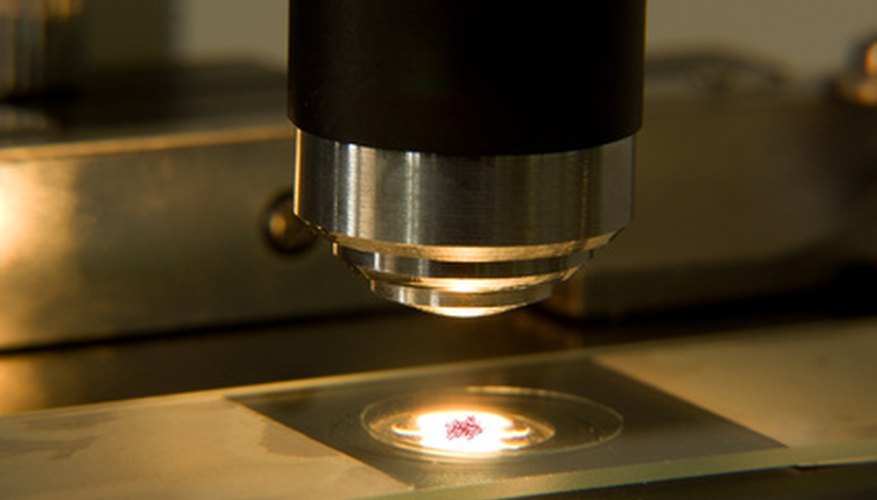
Compound microscopes use a series of mirrors and lenses to magnify specimens placed between a light source and the objective lens. Magnification and working distance are two different characteristics of a microscope that are directly related.
XXX . V0 How to Calculate Total Magnification
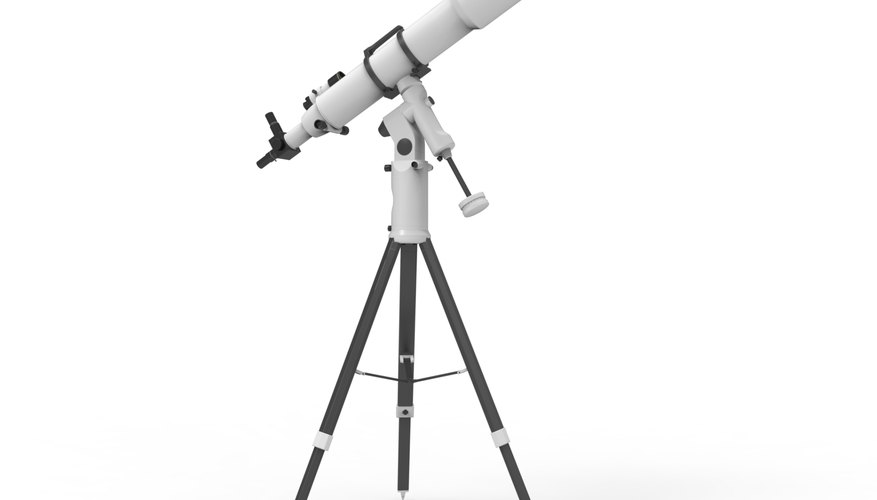
Telescopes and microscopes typically use two lenses. The user looks through the ocular lens, or eye piece, while an objective lens on the opposite end of the device further magnifies the object under observation. Though the two devices work similarly, the process for calculating their magnification is different.
XXX . V00 How to Calculate Magnification on a Light Microscope

Compound light microscopes use a series of lenses and visible light to magnify objects. The magnification allows the user to view bacteria, individual cells and some cell components. In order to calculate the magnification, the power of the ocular and objective lenses is needed. The ocular lens is located in the eye piece. The scope also has one to four objective lenses located on a rotating wheel above the platform. The total magnification is the product of the ocular and objective lenses .
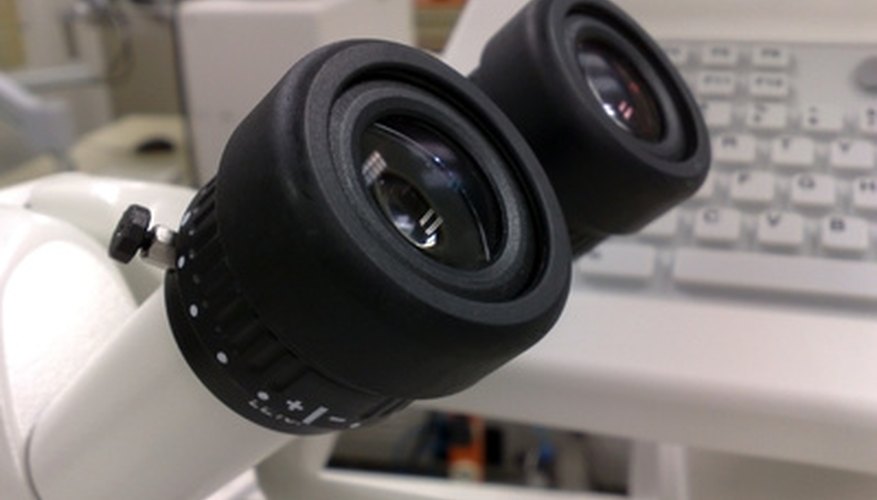
Determine the magnification strength of the ocular lens. This should be written on the outside of the eye piece, but if it is not look in the manual. Generally speaking the ocular lens magnifies 10x.

Determine the magnification capacity of the objective lens. The magnification is written on the side of the lens. Traditionally, the value could be 4x, 10x, 40x, or 100x. If you are not sure of the magnification power, check the manual. The objective lens is located on the rotating wheel just above the stage or platform where you place the microscope slide. In some instances the microscope may have only one lens, but generally it has three to four.
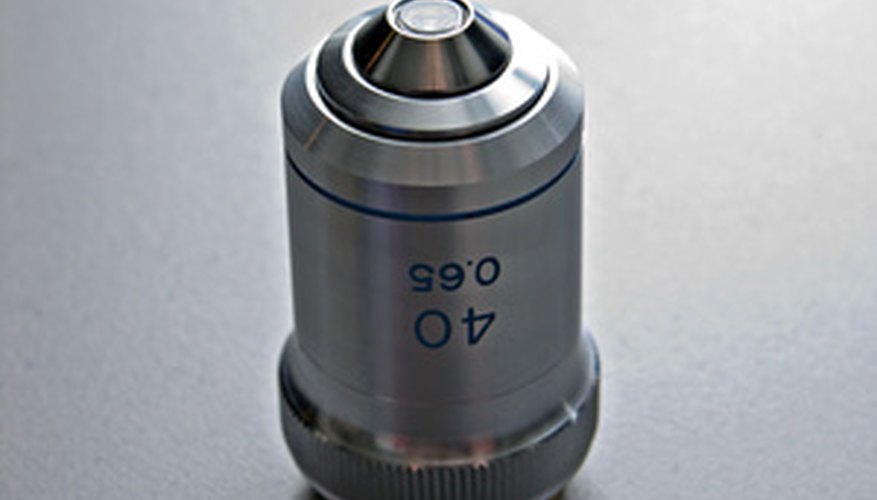
To calculate the total magnification of the compound light microscope multiply the magnification power of the ocular lens by the power of the objective lens. For instance, a 10x ocular and a 40x objective would have a 400x total magnification. The highest total magnification for a compound light microscope is 1000x.
The magnification of a microscope describes the increase in apparent size of an object compared with its actual size. An object magnified 10 times (10X) appears 10 times larger than it really is. Total magnification is the product of the ocular lens magnification and the objective lens magnification. Magnification does not describe the quality of the image. Magnifying an object without good resolution is called empty magnification, as the image appears larger but no greater detail can be seen. Resolution typically limits the usefulness of light microscopes rather than magnification.
Record the magnification of the ocular lens in the eyepiece. The magnification of the ocular lens is typically engraved on the side of the eyepiece.
Record the magnification of the objective lens. The magnification is frequently engraved along with the numerical aperture (NA) on the side of the objective lens. Many compound light microscopes allow different objective lenses to be rotated into use on the nosepiece. Each objective lens has a different magnification.
Multiply the magnification of the eyepiece by the magnification of the objective lens to produce total magnification. For example, a 10X ocular lens and a 40X objective lens will produce a total magnification of 400X (10 x 40 = 400). Changing the ocular lens or objective lens to lenses with a different magnification will change the total magnification of the microscope. Usually, it is the objective lens that is changed to increase or decrease magnification.
XXX . V0000 How Does Water Magnify Things?
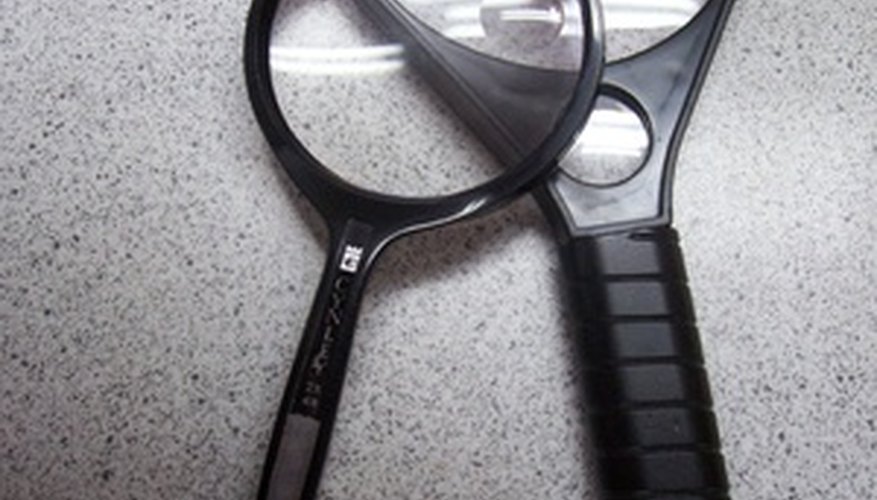
Light rays travel in straight lines. When they strike an opaque surface, the rays bounce, and light is
reflected back to your eye so that you see an image. When light strikes a transparent object, some of the light passes through. If that light strikes the object straight on, it continues to travel in a straight line. If the light enters the transparent object at an angle, though, it changes direction, bending.
XXX . V000000 What Affects the Angle of Refraction of Light?

Imagine a spoon placed in half a glass of water. The spoon appears to bend at the air-water boundary. This is because the light rays reaching your eyes from under the water change direction when they pass into the air. This phenomenon is known as refraction. There are several factors that determine at what angle a light ray will bend when passing from one medium into another.
XXX . V000000 How Do Reflecting Telescopes Work?
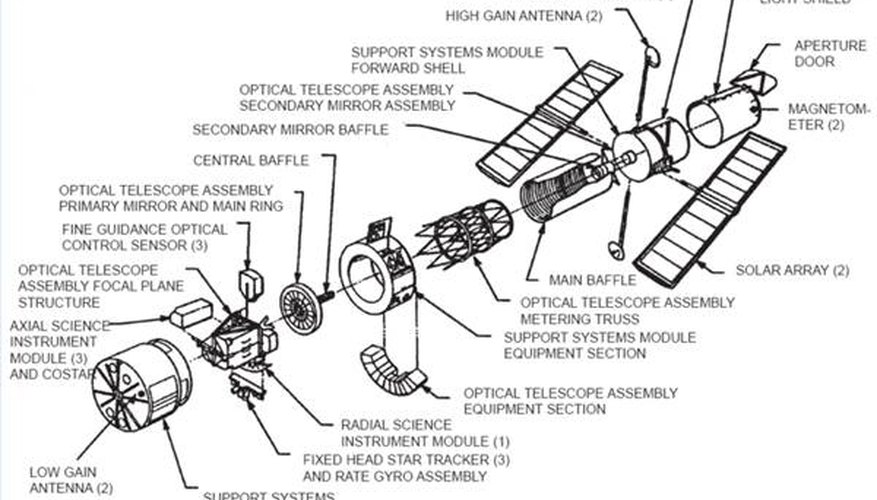
Reflecting telescopes are generally built with two mirrors, a large one called the "primary mirror" and a small one called the "secondary mirror." The primary mirror is usually placed at one end of the telescope's tube, and the secondary mirror is placed in the eyepiece's line of sight. The eyepiece co
A principle of reflection is that when light hits a mirror at any angle, it is reflected at that same angle. This means that the reflected image is not changed.
Depending on the type of reflecting telescope, the two mirrors can be a combination of concave, convex and flat mirrors. The secondary mirror, when flat, is placed at a 45-degree angle.
To obtain an image, the telescope is aimed at an object, and the light enters the tube. The light hits the primary mirror and is reflected to the secondary mirror. It is then reflected from the secondary mirror to the eyepiece, where the image is magnified and sent to the eye.
The microscope and the astronomical telescope uses a second converging lens as an eyepiece to magnifiy the first image. It can help understanding if the screen used is ground glass, so that the image can be seen on the "downstream" side. In that case, the converging lens can be used first to magnify the image on the screen. Then, when the screen is removed, the eyepiece continues to present a magnified, inverted image to the eye.
The Galilean telescope magnifies that first image using a diverging lens. Now the screen must be removed. The "downstream" focal length of the converging lens is placed near the location of the image. As indicated in the figure below, the diverging eyepiece magnifies and inverts the first image, so that the eye sees an "erect" image.
XXX . V Difference Between Working Distance & Magnification

Compound microscopes use a series of mirrors and lenses to magnify specimens placed between a light source and the objective lens. Magnification and working distance are two different characteristics of a microscope that are directly related.
Magnification
Magnification is defined as a "function of making an object appear bigger." The magnification of a lens indicates how many times larger it renders what is viewed through it.Working Distance
Working distance is a linear measurement of the distance between the tip of the objective lens and the specimen. In most compound microscopes, working distance varies by lens; however, certain microscopes have fixed working distances across their magnifications.Relationship
While working distance and magnification are not measures of the same thing, they are related. In most compound microscopes, as magnification increases, working distance decreases dramatically. It is important to be aware of this, as changing magnifications without being mindful of the change in working distance can damage the lenses.XXX . V0 How to Calculate Total Magnification

Telescopes and microscopes typically use two lenses. The user looks through the ocular lens, or eye piece, while an objective lens on the opposite end of the device further magnifies the object under observation. Though the two devices work similarly, the process for calculating their magnification is different.
Magnification in Microscopes
The formula for the total magnification of a microscope is the objective lens magnification times the ocular lens magnification. Almost all adjustable microscopes have the magnification of each lens written on the side of the lens. If you can't find it, look in the user's manual for the figures. Most microscopes have an ocular lens magnification of 10. In a microscope with an ocular magnification of 10 and an objective magnification of 20, the total magnification would be 200x.Magnification in Telescopes
The formula for total magnification of a telescope is the focal length of the objective lens divided by the focal length of the eyepiece lens. The focal length is the distance between the center of the lens and the point where it is in focus. As with microscopes, you can find this data in the owner's manual or on the labeling of the specific device. In a telescope with an objective lens focal length of 1000 mm and an eyepiece focal length of 10mm, the total magnification would be 100x.XXX . V00 How to Calculate Magnification on a Light Microscope

Compound light microscopes use a series of lenses and visible light to magnify objects. The magnification allows the user to view bacteria, individual cells and some cell components. In order to calculate the magnification, the power of the ocular and objective lenses is needed. The ocular lens is located in the eye piece. The scope also has one to four objective lenses located on a rotating wheel above the platform. The total magnification is the product of the ocular and objective lenses .
Calculate Magnification of a Compound Light Microscope

Determine the magnification strength of the ocular lens. This should be written on the outside of the eye piece, but if it is not look in the manual. Generally speaking the ocular lens magnifies 10x.

Determine the magnification capacity of the objective lens. The magnification is written on the side of the lens. Traditionally, the value could be 4x, 10x, 40x, or 100x. If you are not sure of the magnification power, check the manual. The objective lens is located on the rotating wheel just above the stage or platform where you place the microscope slide. In some instances the microscope may have only one lens, but generally it has three to four.

To calculate the total magnification of the compound light microscope multiply the magnification power of the ocular lens by the power of the objective lens. For instance, a 10x ocular and a 40x objective would have a 400x total magnification. The highest total magnification for a compound light microscope is 1000x.
The magnification of a microscope describes the increase in apparent size of an object compared with its actual size. An object magnified 10 times (10X) appears 10 times larger than it really is. Total magnification is the product of the ocular lens magnification and the objective lens magnification. Magnification does not describe the quality of the image. Magnifying an object without good resolution is called empty magnification, as the image appears larger but no greater detail can be seen. Resolution typically limits the usefulness of light microscopes rather than magnification.
Record the magnification of the ocular lens in the eyepiece. The magnification of the ocular lens is typically engraved on the side of the eyepiece.
Record the magnification of the objective lens. The magnification is frequently engraved along with the numerical aperture (NA) on the side of the objective lens. Many compound light microscopes allow different objective lenses to be rotated into use on the nosepiece. Each objective lens has a different magnification.
Multiply the magnification of the eyepiece by the magnification of the objective lens to produce total magnification. For example, a 10X ocular lens and a 40X objective lens will produce a total magnification of 400X (10 x 40 = 400). Changing the ocular lens or objective lens to lenses with a different magnification will change the total magnification of the microscope. Usually, it is the objective lens that is changed to increase or decrease magnification.
XXX . V0000 How Does Water Magnify Things?
Behavior of Light

Light rays travel in straight lines. When they strike an opaque surface, the rays bounce, and light is
reflected back to your eye so that you see an image. When light strikes a transparent object, some of the light passes through. If that light strikes the object straight on, it continues to travel in a straight line. If the light enters the transparent object at an angle, though, it changes direction, bending.
Light Refraction
This bending of light is called refraction. Refraction occurs because light entering an object slows down. When it enters at an angle, one side of the light ray enters before the other, slowing down first. You can imagine this by picturing a speeding car that suddenly has the brakes applied to one side only--the car would spin in the direction of the side that suddenly slows down.Light in Water
Looking from above, an object under water appears larger than it does in air. It's not that the image the light gave our eyes is bigger. It's that the image is actually closer to our eyes, since the light is not passing straight down, but is instead bending relative to the water's surface. Light passing straight down would be perpendicular to the water's surface, like the vertical line on the letter T. A closer image looks bigger--the underwater object is magnified.XXX . V000000 What Affects the Angle of Refraction of Light?

Imagine a spoon placed in half a glass of water. The spoon appears to bend at the air-water boundary. This is because the light rays reaching your eyes from under the water change direction when they pass into the air. This phenomenon is known as refraction. There are several factors that determine at what angle a light ray will bend when passing from one medium into another.
Angle of Incidence
If a light ray crosses over from one medium to another -- from air to glass for instance -- perpendicular to the surface between the media, it does not change direction, it passes right through. If, however, it hits the surface at an angle to the perpendicular, it changes direction as it moves into the second medium. The angle the light ray makes with the perpendicular in the first medium is called the angle of incidence. The angle the light ray makes with the perpendicular in the second medium is called the angle of refraction. The relationship between the angle of incidence (i) and angle of refraction (r) is given by Snell's law: sin(r)/ sin(i) = ni/nr, where ni is the refractive index of the first medium and nr is the refractive index of the second medium. For a fixed pair of media, ni/nr is fixed. So it is clear that when the angle of incidence i changes, the angle of refraction r changes as well.Refractive Indices
From Snell's law, you can see that the angle of refraction depends on the ratio ni/nr of the refractive indices of the two media. If nr is greater than ni -- for instance when light passes from air (ni = 1.0) to glass (ni = 1.5) -- then the angle of refraction is smaller than the angle of incidence, i.e., the light ray bends toward the perpendicular to the surface between the two media as it crosses into the second medium. If nr is smaller than ni, the light ray entering another medium bends away from the perpendicular to the surface between the two media .Wavelength of Light
The angle of refraction also depends on the wavelength of light. Visible light of different colors have different wavelengths and slightly different indices of refraction. The difference is so small that you don't see it when white light passes through a flat plate of glass for instance. But when white light passes through a prism and is refracted twice at the two surfaces, each color bends at a different angle and you can clearly see the separate colors.Anisotropy
In some special cases, the index of refraction in a medium can depend on the direction in which light passes through the medium. Certain mineral crystals have two distinct indices of refraction along two directions and are known as birefringent materials. For example, tourmaline is a crystal with two refractive indices: 1.669 and 1.638. For these materials, the angle of refraction depends on the orientation of the boundary between the media with the special axes of the crystal.XXX . V000000 How Do Reflecting Telescopes Work?

Reflecting telescopes are generally built with two mirrors, a large one called the "primary mirror" and a small one called the "secondary mirror." The primary mirror is usually placed at one end of the telescope's tube, and the secondary mirror is placed in the eyepiece's line of sight. The eyepiece co
A principle of reflection is that when light hits a mirror at any angle, it is reflected at that same angle. This means that the reflected image is not changed.
Depending on the type of reflecting telescope, the two mirrors can be a combination of concave, convex and flat mirrors. The secondary mirror, when flat, is placed at a 45-degree angle.
To obtain an image, the telescope is aimed at an object, and the light enters the tube. The light hits the primary mirror and is reflected to the secondary mirror. It is then reflected from the secondary mirror to the eyepiece, where the image is magnified and sent to the eye.
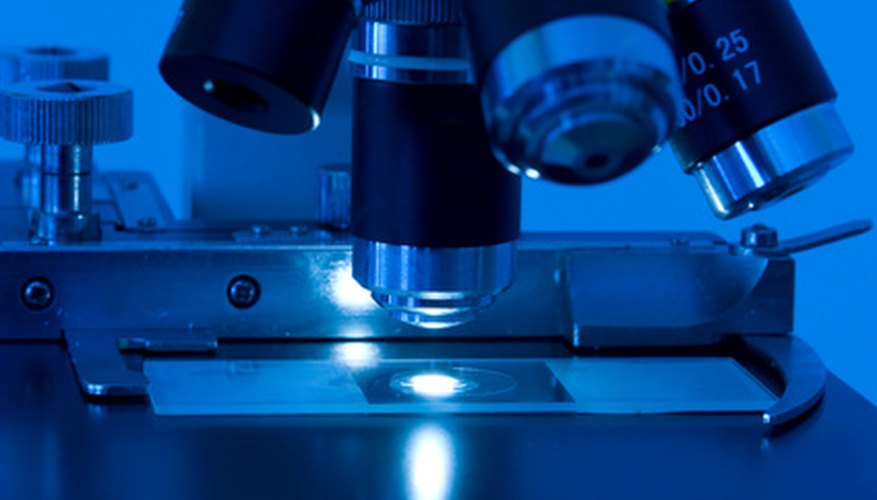
Tidak ada komentar:
Posting Komentar